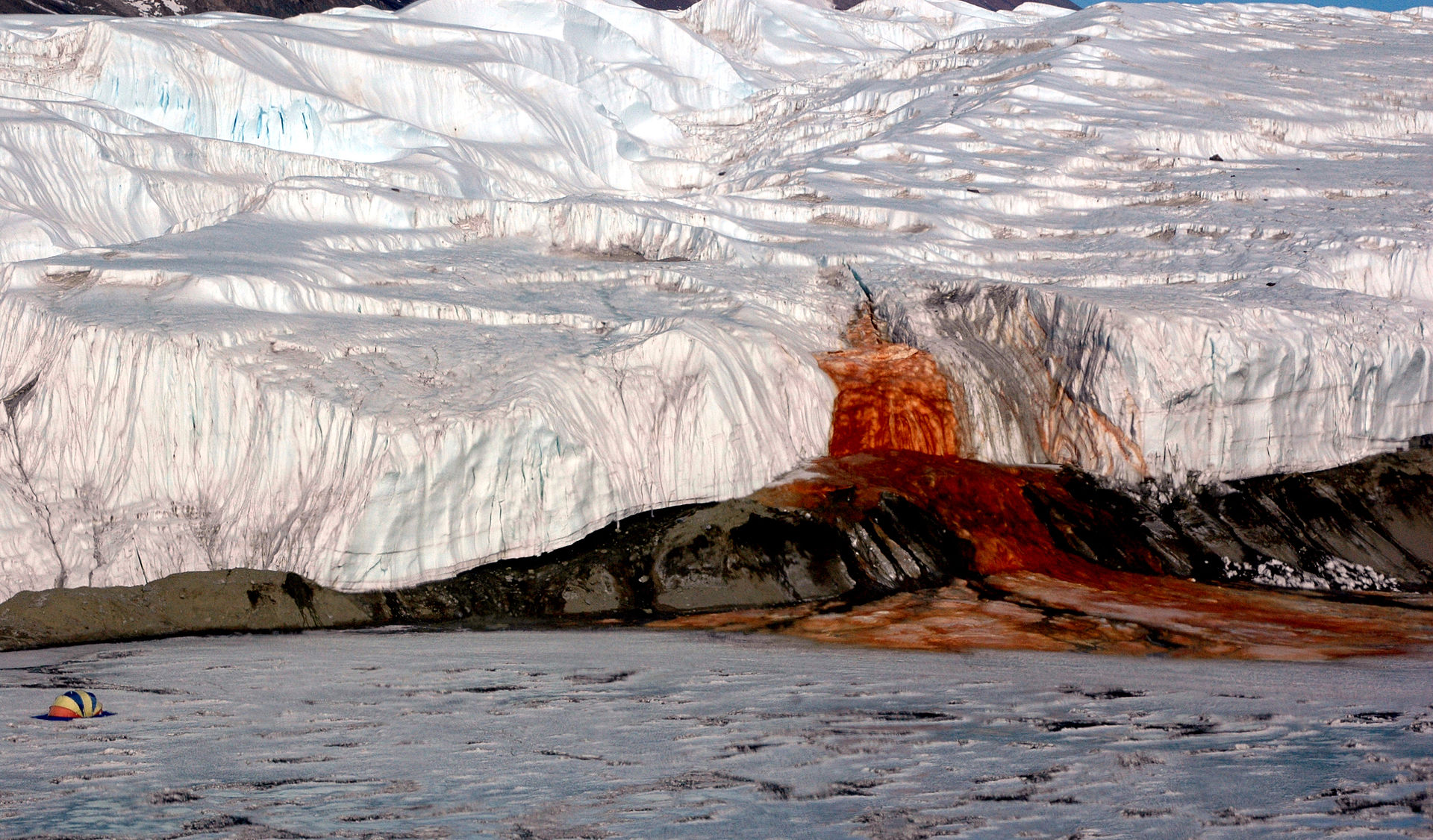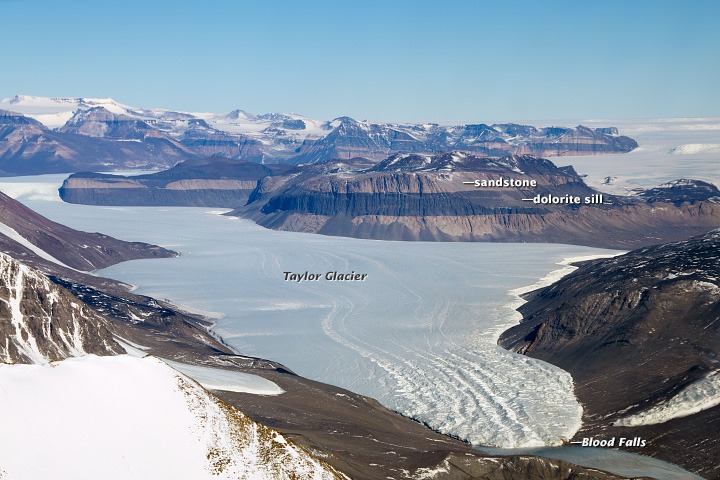If not defined and explained by science, some strange weather phenomena and other events will be thought of as a sign of an Armageddon or an apocalypse and people perhaps think they are punished for their wrongdoings just like what happened in the time of Moses in the Exodus.
In 1911, at the McMurdo Dry Valley, Antarctica, an odd phenomenon was observed by some scientists. There was a dark red unknown element and source that had stained the river and the surrounding iced cliff. The flow was previously a mystery, as the mean temperature in the area is -17 degrees Celsius and only a little glacial melting can be seen at the surface.
What causes the water in the lake to be reddish?
An Australian geologist Griffith Taylor discovered that there were reddish deposits in the valley that bears his name. Scientists previously believed that algae caused the discoloration of the water, but later it was proven to be caused by iron oxides.
Due to the abundant amount of iron-oxide from the tongue of Taylor Glacier that flowed onto the ice-covered surface of West Lake Bonney in the Taylor Valley, it tainted a plume of saltwater and made an impression that there was blood flowing from an unseen source.
Iron-rich hypersaline water intermittently surfaces from small fissures in the ice cascades. The saltwater source is a subglacial pool of unknown size covered by about 400 meters (1,300 ft) of ice several kilometers from its tiny outlet at Blood Falls.
About two million years ago, a small body of water sealed beneath the Taylor Glacier, contained an ancient community of microbes. These microbes were trapped below a thick layer of ice and have remained isolated inside. They have thrived and evolved in an environment without light or free oxygen and little heat.
Jill Mikucki, a geomicrobiologist from the University of Tennessee, said that water samples from Blood Falls contained at least 17 different types of microbes and the absence of oxygen. He theorized that those microbes perhaps used sulfate to respire with ferric ions and metabolize the trace levels of organic matter trapped with them. Such a metabolic process had never been observed in nature.
Microbes live off sulfates in the water and create energy via sulfate reduction, a similar reduction process in which humans convert food to energy but instead of using oxygen, these microbes use the less favorable sulfate.
These microbial collections live in extreme conditions that may resemble the beginning of life on Earth before the presence of oxygen in the atmosphere. It give clues as to how life could potentially develop on other planets that lack an oxygen-rich atmosphere like Earth. Also, it supports the idea that there are many ways life can adapt to extreme environments.
The lake has very high salinity and is iron abundant that causes the waterfall to appear dark reddish. But why would the water flow while its surroundings are frozen and in ice form? Scientists found out fissures on the glaciers that became the passageway of the subglacial lake to flow out and form the falls without contaminating the ecosystem within.
Another factor that is supported by the images taken from underneath the glaciers revealed that a complex network of subglacial rivers and a subglacial lake are filled with brine high in iron which caused the falls its reddish tint. Additionally, a study claims that the composition of the brine also explains the fact that the liquid flows instead of freezes. The latent heat of freezing accompanied by high salinity content makes the brine remains liquid within the subglacial and englacial environments despite its freezing surroundings. Lastly, the pressure at the base of the glacier have a significant impact in reducing the temperature at which water freezes.
The ecosystem that exists in the Blood shows that life can survive in the most extreme weather conditions on Earth. Antarctica’s Blood Falls is indeed a wonder to behold both visually and scientifically.
RECENT STUDIES
In December 2014, a probe called IceMole, designed by a German collaboration, was used by some scientists and engineers led by Mikucki to melt into the glacier and directly sample the salty water (brine) that feeds Blood Falls.
After samples were analyzed, results revealed a cold (-7 °C), iron-rich (3.4 mM) subglacial brine (8% NaCl). Scientists isolated and categorized a type of bacteria capable of growing in salty water (halophilic), that thrives in the cold (psychrophile), and is heterotrophic, which they assigned to the genus Marinobacter.



